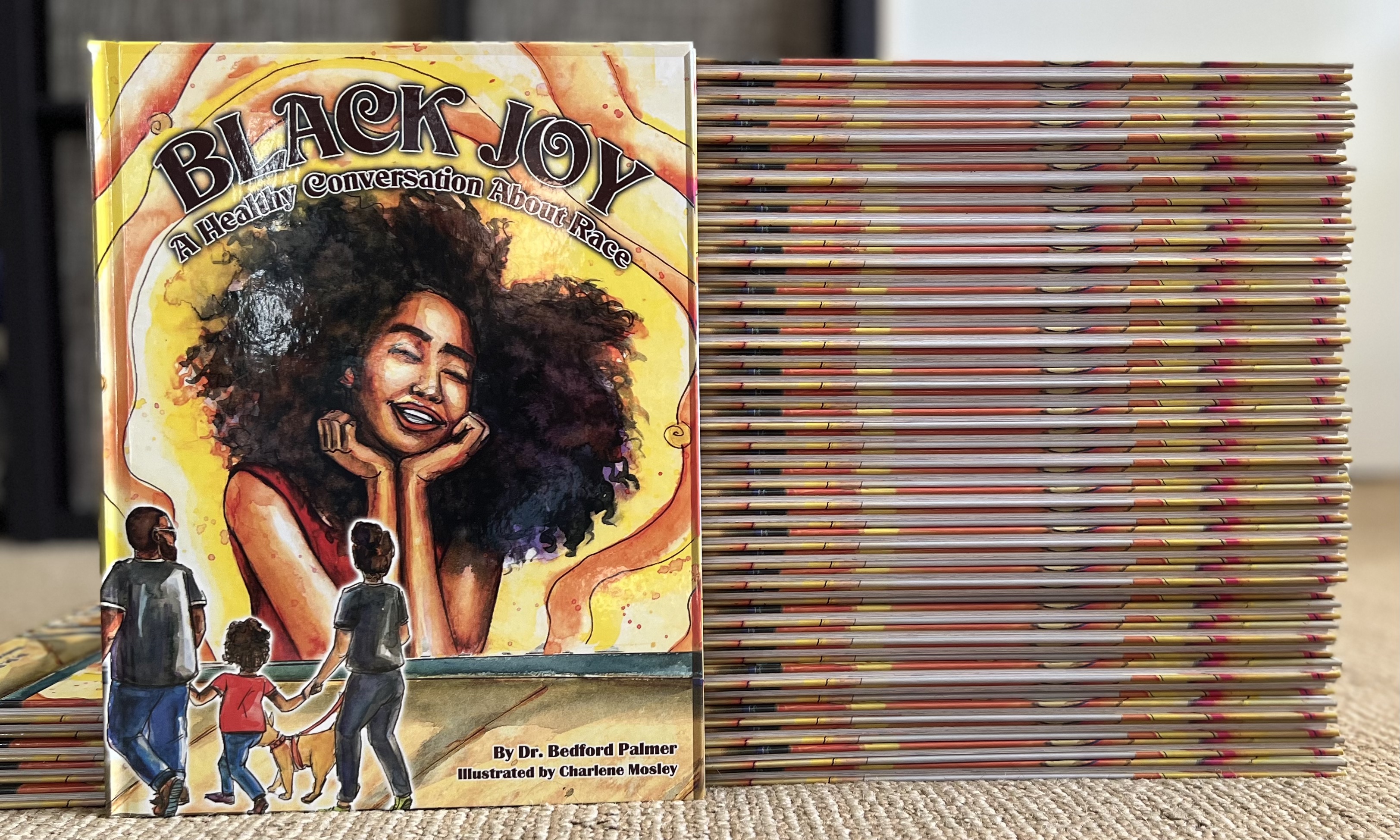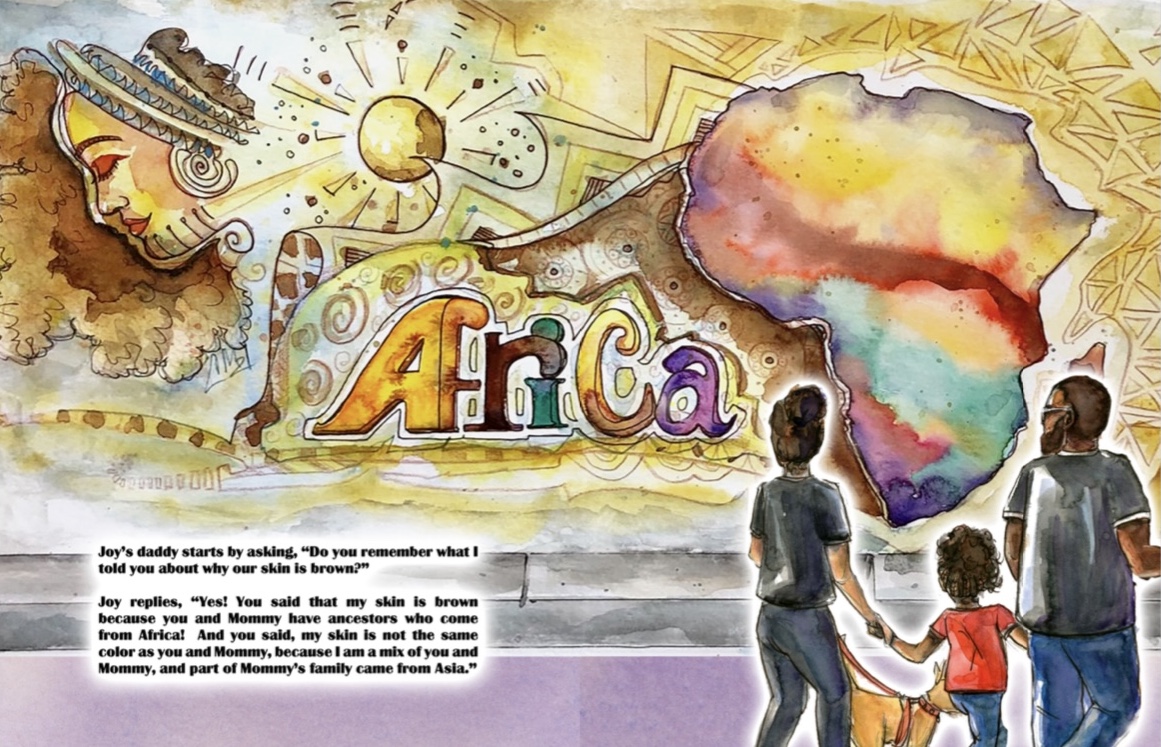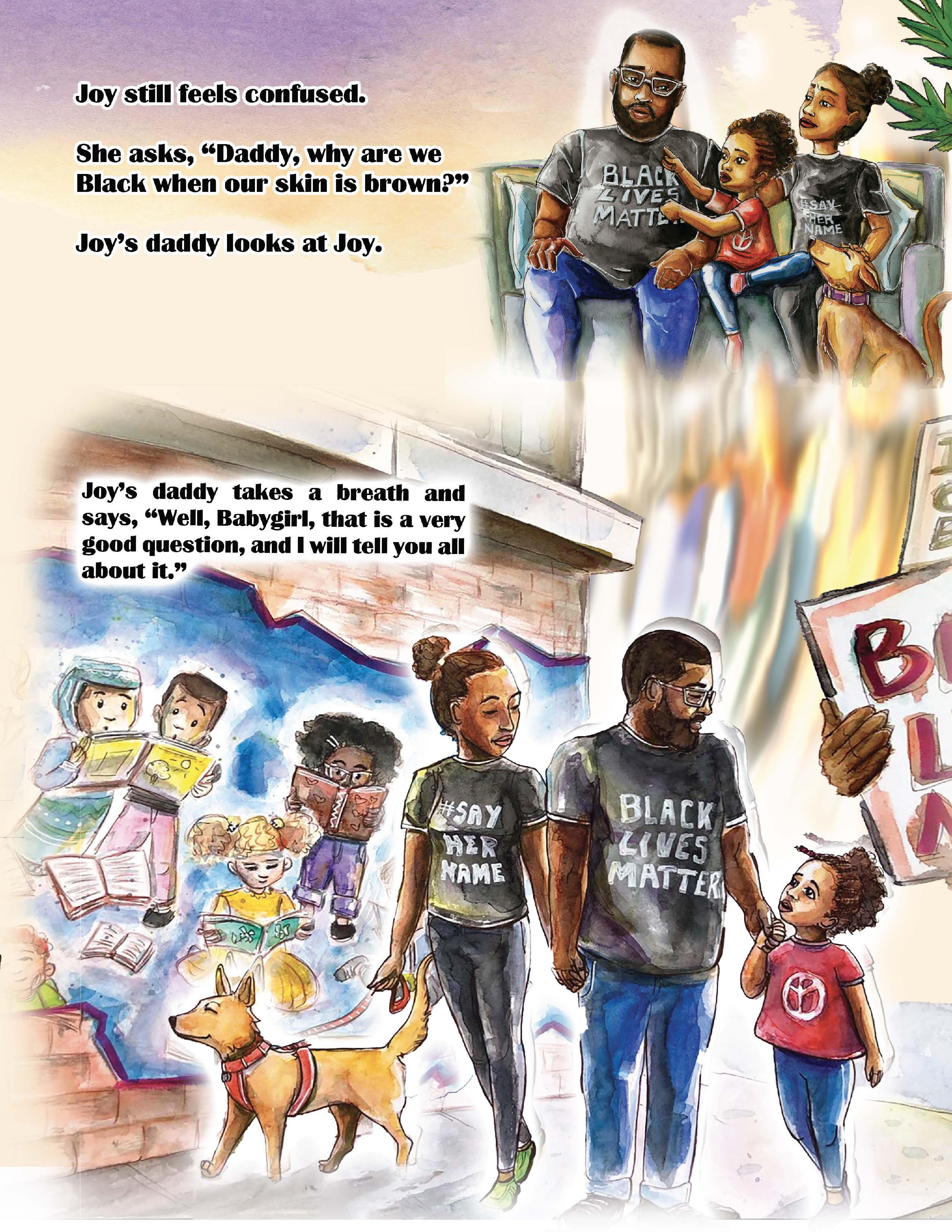
Social Justice Through Storytelling
In ‘Black Joy,’ Bedford Palmer II carries forward a healthy conversation about race—building upon impactful work that reaches across boundaries.
Educator. Psychologist. Author. Counselor. Mentor.
Labeling the work that Saint Mary’s Professor Bedford Palmer II, PhD does on a daily basis might prove more an exhausting intellectual exercise than an accurate way of describing his various pursuits—and how they are integrated. But those who have worked with Palmer know his efforts in the area of social justice take many forms.
You might find him instructing students and interacting with academic colleagues as the chair of the Counseling Department at Saint Mary’s. Or, you might have come across Deeper Than Color, Palmer’s psychology practice that specializes in providing psychotherapeutic support to Black people and other People of Color.
And then there’s Palmer the author. His first book, Daddy, Why Am I Brown? A Healthy Conversation About Skin Color and Family, drew critical acclaim after it was released in January of 2020 for its impact in fostering discussions of race with kids.

This year, Palmer released Black Joy: A Healthy Conversation About Race. This book, his second, continues the story of Joy, the main character in Daddy, Why Am I Brown? It adds further discussions on social rationales around race—and how race exists within a historical framework.
Now two years older than she was in Daddy, Why Am I Brown?, Joy explores the concept of race with her family through a literal and metaphoric journey: walking through a neighborhood as part of a Black Lives Matter march. Palmer’s text is paired with evocative and striking illustrations by Charlene Mosley, including renditions of mural art throughout the neighborhood that is used to depict essential concepts. By mixing traditional watercolor and digital design, Mosley’s illustrations bring Joy’s learning process to life.
So, why continue the story?
“I think that some other people think it’s a little weird to write children’s books that explicitly talk about race and color,” Palmer says. “But for me, it all comes together. Because when I’m doing my actual practical clinical work, whether with Black people, white people, or other folks, I tend to have to help adults unlearn problematic beliefs that they learned as kids.”

Through a Kickstarter campaign in early 2022, Palmer was able to obtain enough funding to produce hardcover versions of Black Joy. The Kickstarter campaign built excitement around the project, and it included a book match component: When someone bought a book, another copy was donated to an elementary school with the help of Reading Partners, an Oakland-based nonprofit. That resulted in over 200 copies of the book going to elementary schools in Oakland.
Windows and Mirrors
In Palmer’s view, his work as an author of children’s books blends perfectly with the work he does as an educator at Saint Mary’s and as a clinician: providing the constructive language that might enable parents to hold meaningful conversations with their children about race.
Professor Tamara Spencer, PhD, an expert on early childhood literacy, describes the impact of Palmer’s books through the metaphors of windows and mirrors. She is an associate professor in the Teacher Education Department, Kalmanovitz School of Education, and Justice, Community, and Leadership (JCL) Program.
As Spencer explains, for some children, a text that represents diverse voices might be a mirror, where some part of the text connects with their identity. “Professor Palmer’s books offer a unique opportunity for children to experience texts in which the characters might resemble or be like their lived experience, which is a really powerful place,” she says. “We know that children learn best when they feel connected with the text that they're reading. And all too often for Black children, we are not positioned or characterized as the protagonist right in the story. So his text is unique, not only because we see representation of children and families who are Black, but it is also an affirming story, one that centers identity, centers community, and centers our lived experience.”
For other young readers who might not share the experience of a character, the book offers a window of understanding and empathy.

Everyday Lessons
Colleague Scott Schönfeldt-Aultman, PhD notes that books like Palmer’s help shape organic, human conversations we need to have. At Saint Mary’s he teaches courses in Communication, Ethnic Studies, Intercultural Communication, and Women’s and Gender Studies. “The underlying assumption that the books have—and that I share—is those conversations should already have been occurring before kids are in our lives,” Schönfeldt-Aultman says. “Really they should happen as soon as kids are born, are learning language. After all, we are experiencing the implications of race every day, and kids are seeing this from early on. In particular, I think these books offer white families one way to have, or even begin, those conversations with the kids in their lives, giving them an opportunity that they may have avoided or not known how to have before.”
It’s fair to say that much of Palmer’s professional work is focused on continuing those conversations. He is also the recent editor of a new textbook, Practical Social Justice: Diversity, Equity, and Inclusion Strategies Based on the Legacy of Dr. Joseph L. White. And he recently received the 2022 Janet Hurwich Award for Leadership and Advocacy from the Alameda County Psychological Association.
“It’s this idea that he doesn’t see his responsibility to any one population, but in fact, all of those as a contributing factor in what it means for him in his work as a licensed psychologist,” says colleague Tamara Spencer. “I think that is incredibly powerful.”
Spencer also points toward what animates the work that she and Palmer both do at Saint Mary’s, grounded in the heritage of the Christian Brothers with a commitment to educating the whole person. “I think that is the vision—and our responsibility as academics—that is very much within the Lasallian tradition,” she says. “What it means to truly be an educator.”
LEARN MORE about programs at the Kalmanovitz School of Education.
Ben Enos is Director of Media Relations at Saint Mary’s. Write him.